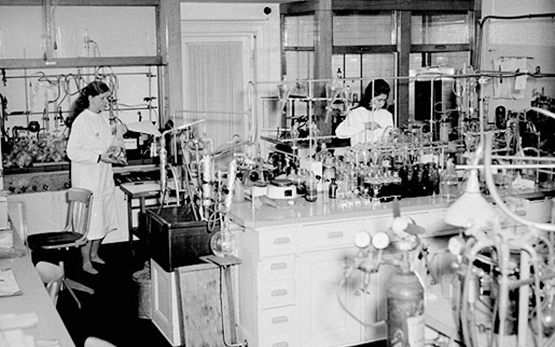Birth of Agricultural Research
The first fertilizers - phosphates and guano - were used in1850. The first analysis and control laboratories were then launched in Europe, in order to protect customers from imitations. With the knowledge of fertilizer composition came the requirement for optimal dosage. Every type of crop has its own requirements, and every type of soil also needs an appropriate dosage. Soil chemistry and physics therefore gained in importance. Research was also begun into the composition and nutrient content of forage crops for farm animals. Research into digestibility in particular required refined analysis methods as far back as the beginning of the twentieth century. The Federal Research Stations were established as a result.
In the second half of the 19th century, scientific and technological findings began to exert a stronger influence on agricultural production and processing – especially with regard to fertiliser application, feeding and mechanisation, as well as the increasing processing of milk into cheese and condensed milk. Fertiliser and feed analyses, seed and milk inspections and research into cheese fermentation became essential. The switch from cereal to milk production ran in parallel with the upswing in cheese production. Arable land was more than halved, at the same time as cheese exports doubled to 36 million kg from 1871/80 to 1913; a quarter of Swiss milk production at that time went to exports. Good cheese quality became decisive for the price of milk and for farming income.






